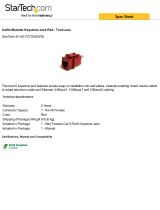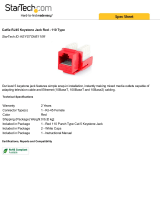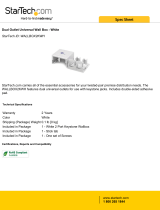Page is loading ...

Printed in Japan
402029000
(9002201)
01.11-.7A(C05)

Checking Accessories
When unpacking the projector and accessories from their box, check that the
following items are included.
If any of the components are missing or incorrect, please contact the place of purchase.
•Projector
• Lens cover with cord
• Remote control • Two manganese dry cells
for the remote control
• Power cord (9,8 ft (3 m)) • Computer cable
(6 ft (1,8 m))
• Audio/Video (A/V) cable
(red/white/yellow)
(6ft (1,8 m))
• USB mouse cable (6 ft
(1,8 m))
• PS/2 mouse cable (6 ft
(1,8 m))
• Safety Instructions/World-
Wide Warranty Terms
• Instruction Manual
(this manual)
• Quick Reference Guide
• Soft case

1
In This Manual
Getting Started
Name and function of each part and of the remote control operation
Setup
Special notes on setup, setup instructions, and screen size and projection
distance details
Projecting Images
Connecting with different devices and projecting and adjusting images
What You Can Do
Functions to get the most out of your projector
Menu Functions (Remote Control Only)
Basic menu functions and settings
Troubleshooting
Troubleshooting projection failure, bad projection, and other problems
Maintenance
Performing lamp replacement and other routine maintenance and care
General Notes
Optional parts, glossary, index, specifications

2
Contents
In This Manual.................................................................................. 1
Features............................................................................................ 4
About The Manuals and Notations Used.......................................... 6
Getting Started
Part Names and Functions............................................................... 8
Remote Control............................................................................... 11
Setup
Special Notes on Setup.................................................................. 14
Setup Instructions........................................................................... 15
Screen Size and Projection Distance Details ................................. 16
Projecting Images
Connecting to a Computer.............................................................. 18
Connecting to an A/V Device.......................................................... 21
Providing Sound Through an External Audio Device...................... 23
Projecting Images........................................................................... 24
Adjusting Images ............................................................................ 28
Ending After the Projection............................................................. 31
What You Can Do
Using the Wireless Mouse.............................................................. 34
Enlarging an Image......................................................................... 36
Adjusting Image Size...................................................................... 37
Adding Image Effects...................................................................... 38
Freezing and Deleting Images........................................................ 39
Displaying Help Screens................................................................. 40

3
Menu Functions (Remote Control Only)
Learning Basic Operations............................................................. 42
Video Menu.................................................................................... 43
Audio Menu.................................................................................... 45
Effect Menu.................................................................................... 46
Setting Menu.................................................................................. 47
Advanced Menu............................................................................. 49
About Menu.................................................................................... 50
Reset All Menu............................................................................... 51
Troubleshooting
Possible Failures............................................................................ 54
When Indicators Do Not Help......................................................... 57
Maintenance
Projector Cleaning, Lens Replacement,
Air Inlet Cleaning.......................................................................... 64
Lamp Replacement........................................................................ 66
General Notes
Optional Accessories..................................................................... 70
Glossary......................................................................................... 71
Specifications................................................................................. 73
External Dimensions...................................................................... 75
Index.............................................................................................. 76

4
Features
Compact and Lightweight
The compact, lightweight design of your projector (6.6 liters and roughly 3.1
kilograms (6.83 pounds) ) allows easy carrying.
Clear, Sharp Images
Though compact, your projector provides clear, sharp presentations even in
well-illuminated areas.
Global Video Signal Compatibility
Your unit projects virtually all of the video signal formats used world-wide,
including NTSC, NTSC4.43, PAL, M-PAL, N-PAL, PAL60, and SECAM.
Improved Video Image Clarity
Projection of distinct video images from composite video and S-video input is
possible.
"Keystone" Correction Function (See pages 29 and 47)
This built-in function allows easy correction of trapezoidal distortion caused by
projection angle.
Wireless Mouse Remote Control for Computer Mouse Operations (See
page 34)
The remote control allows wireless operation of various projector functions,
including cursor/stamp, horizontal bar display, and image enlargement and
reduction.
Presentation Effects Function (Remote control Effect button, See page 38)
Use of the remote control Effect button creates effective presentations.
Cursor/Stamp
Horizontal bar

6
About The Manuals and Notations Used
Types of Manual
The documentation for your EPSON projector is divided into the following
three manuals. The manuals cover the following topics.
• Safety Instructions/World-Wide Warranty Terms
This manual contains information on using the projector safely, and also
includes World-Wide Warranty Terms and a Troubleshooting check sheet.
Be sure to read this manual thoroughly before using the projector.
• Instruction Manual (this manual)
This Instruction Manual contains information on installing the projector,
basic operation, using the projector menus, troubleshooting and maintenance.
• Quick Reference Guide
Contains an overview of the most commonly-used projector functions for
easy reference. You should keep this Quick Reference Guide near the
projector at all times and refer to it before starting presentations and while
using the projector in order to check details of operation.
General information
Meaning of "unit" and "this product"
When "unit" or "this product" appears in the text of this Instruction Manual,
they may refer to items which are accessories or optional equipment in addition
to the main projector unit itself.
Warning: Indicates procedures which may result in death or serious injury if
sufficient care is not taken.
Caution: Indicates procedures which may result in damage or injury if sufficient
care is not taken.
Tip: Indicates additional information and points which may be useful to know
regarding a topic.
*
Indicates that an explanation of the underlined word or words in front of
this symbol appears in the Glossary of Terms.
Refer to the Glossary in the General Notes. (See page 71)

8
Part Names and Functions
Projector Unit
[Front]
[Side]
[Rear]
[Bottom]
Operation Display Indicator
Problem/Alarm Display Indicator
Control panel
Wide/Tele Button
Focus ring
Front adjustable foot
Remote control receiver
Lens cover
Front adjustable foot
Foot adjust lever
Power inlet
Air exhaust vent
Speaker
Air inlet
Input/Output ports
Air inlet
Front adjustable foot
Rear adjustable foot
Front adjustable foot
Lamp Cover

9
[Wide/Tele Button (See page 37)]
[Control Panel]
[Input/Output Ports]
Press the T side (Tele) of the button to reduce the image size.
Press the W side (Wide) of the button to enlarge the image size.
Help Button (See page 40)
Displays help screen.
Power Button (See pages 25, 31)
Switches power on and off.
*Press twice to turn the power off.
Keystone (Select) Button (See pages 29, 40)
Adjust when screen is distorted trapezoidally.
When the help menu is displayed, functions as a "Select" button for menu items.
Source (Enter) Button (See page 26, 40)
Toggles the video source between Computer, S-Video, and Composite video.
When the help menu is displayed, functions as a "Enter" button.
Mouse/Com port (See page 35)
Used when using the remote control as
a wireless mouse.
USB Mouse port
(See page 35)
Used when using the
remote control as a
wireless mouse.
S-Video port
(See page 21)
For input of S-video
signal from A/V device.
Composite Video port
(See page 21)
For input of Composite Video signal
from A/V device.
Audio ports
(See page 21)
For input of audio signal
from A/V device.
Audio Out port
(See page 23)
For output of audio signal
from projector.
Audio In port (See
page 20)
For input of audio
signal from
computer.
Computer/Component Video
port (See page 20)
For video signal input from
computer or component video.

10
Remote Control
[Front]
[Back]
Indicator
Lights during signal output from remote control.
Power Button (See page 25, 31)
Switches projector power on and off.
*Press twice to turn the power off.
R/C switch (See pages 25, 32)
Switches remote control power on
and off.
Computer, S-Video, Video Button
(See page 26)
Switches to the selected video
source.
Enter Button
Used for scrolling, menu item
selection, and as the left mouse
button.
Help Button (See page 40)
Provides topic-specific explanation
for addressing problems.
Use this button when problems
occur.
Freeze Button (See page 39)
Temporarily stops a moving picture.
To release the freeze, press the
button again.
A/V Mute Button (See page 39)
Temporarily eliminates picture and
sound.
To release muting, press the button
again or adjust the volume.
Effect Button (See page 38)
Executes an assigned effect
function.
Esc Button (See page 34, 42)
To terminate an activated function,
or right-click function when using as
a wireless mouse.
Menu Button (See page 42)
Displays or cancels menus.
Auto Button (See page 30)
Optimizes computer video.
Volume Button (See page 30)
Adjusts volume.
E-Zoom Button (See page 36)
Executes the E-Zoom function.
Battery Cover

11
Remote Control
Operating Range
The remote control may not operate beyond certain distances and angles from
the receiver on the projector. Observe the following conditions during use.
[Operating Distance : Approximately 393.70inches (10m) ]
[Operating Area:]
Horizontally
Vertically
Tip:
• The remote control R/C switch must be switched to "On" to use the remote control.
• Point the remote control towards the remote control receiver on the projector unit.
• Certain screens may shorten the operating distance (approximately 393.70inches
(10m) ) of the remote control when the control is pointed towards the screen to reflect
its signal during use.
• Situate the remote control receiver out of direct sunlight, fluorescent light, and
similar light sources.
These may cause the remote control to malfunction.
• If the remote control malfunctions or stops operating, the batteries may need
changing.
Replace the batteries with a fresh set.
Remote control
transmitter
Remote control receiver
Approximately 30º Approximately 30º
Approximately 15º

12
Inserting Batteries in the Remote Control
This section describes how to insert batteries in your remote control.
1.
Remove the battery cover.
Slide the catch of the battery cover in the
direction shown by the arrow.
Tip:
Be sure to use fresh batteries of the same type as
the old.
2.
Insert batteries.
Be sure to match the polarity to that
indicated on the remote control.
Tip:
•Battery type
Two manganese dry cells R6 (AA)
• Use of 30 minutes per day will require a
change of batteries approximately every 3
months.
3.
Replace the battery cover.
Press the battery cover into the remote
control until it clicks firmly into place.

14
Special Notes on Setup
The best picture is obtained when the projector and screen are set up facing
each other directly, as shown below. Set your projector and screen up this way.
[View from right or left]
Keystone correction allows correction of trapezoidal distortion (See pages 29,
47).
[View from above or below]
Caution:
• Do not block the air exhaust vent on the side of the projector or the air inlets on the
right side and rear of the projector.
• Do not place the unit in direct contact with air conditioner, heater, or other
ventilation currents.
• When setting up the projector near walls, allow at least 7.87inches (20cm) from all
walls.
15º
15º
Upward approximately 15º
Downward approximately 15º
90º
9
1
90º

15
Setup Instructions
Your projector allows projection in the following two ways. Set up the
projector as your location requires.
[Viewing from the front]
[Projection on a semi-transparent screen and viewing from the rear]

16
Screen Size and Projection Distance Details
Select a distance from lens to screen that provides your desired screen size.
The recommended distance is 39.37inches (1.0 m)—515.75inches (13.1 m)
.
Refer to the following table for setup.
* Use the "approximate projection distance" as a guide to setup. Projection
conditions and other factors can affect results.
Tip:
A keystone correction will reduce screen size.
Screen size (inch (cm) ) Approximate projection distance* (inch (m) )
300” (240.16x181.1 (610x460)) 433.07—515.75 (11.0—13.1)
200” (161.42x118.11 (410x300)) 287.4—342.52 (7.3—8.7)
150” (120.08x89.76 (305x228)) 216.54—255.91 (5.5—6.5)
120” (96.06x72.05 (244x183)) 173.23—208.66 (4.4—5.3)
100” (78.74x59.06 (200x150)) 145.67—169.29 (3.7—4.3)
80” (62.99x47.24 (160x120)) 114.17—133.86 (2.9—3.4)
60” (47.24x35.43 (120x90)) 86.61—102.36 (2.2—2.6)
40” (31.89x24.02 (81x61)) 59.06—66.93 (1.5—1.7)
30” (24.02x18.11 (61x46)) 43.31—47.24 (1.1—1.2)
28” (22.44x16.93 (57x43)) 39.37—43.31 (1.0—1.1)
300"
200"
150"
120"
100"
80"
60"
40"
30"
28"
81x61
61x46
120x90
160x120
200x150
244x183
305x228
410x300
610x460 (cm)
20(cm
)
*
20(cm)
*
57x43
* When installing against a wall, leave a
space of about 7.87 inches (20 cm) between
the projector and the wall.

17
Projecting Images
Connecting to a Computer......................................18
Connecting to an A/V Device.................................21
Providing Sound Through an External
Audio Device........................................................23
Projecting Images ...................................................24
Adjusting Images....................................................28
Ending After the Projection....................................31

18
Connecting to a Computer
Computers which can be connected
Some computer models may not allow connection, and others may allow
connection but not projection.
Make sure that the specifications of the computer you are using for connection
meet the following two requirements.
[The computer must have a video signal output port]
Make sure that the computer has a port that outputs a video signal.
A port that outputs a video signal is called an "RGB port", "monitor port", or
"video port" or the like.
Consult the section describing "connection to an external monitor" or the like
in the instruction manual for the computer that you are using, and make sure
that the computer has a video signal output port.
Computers with an integrated monitor and other components as well as
laptop computers may require separate purchase of an external output port.
In other cases, an external output port cannot be attached.
[The resolution and frequency of the computer must be within the range of
specifications shown on the following page]
The resolution and frequency of the video signal output by your computer
must be compatible with your projector in order to allow projection (some
computers allow partial projection, but clear projection cannot be obtained).
Check the resolution and frequency of the video signal in the instruction
manual of the computer you are using for projection.
/





